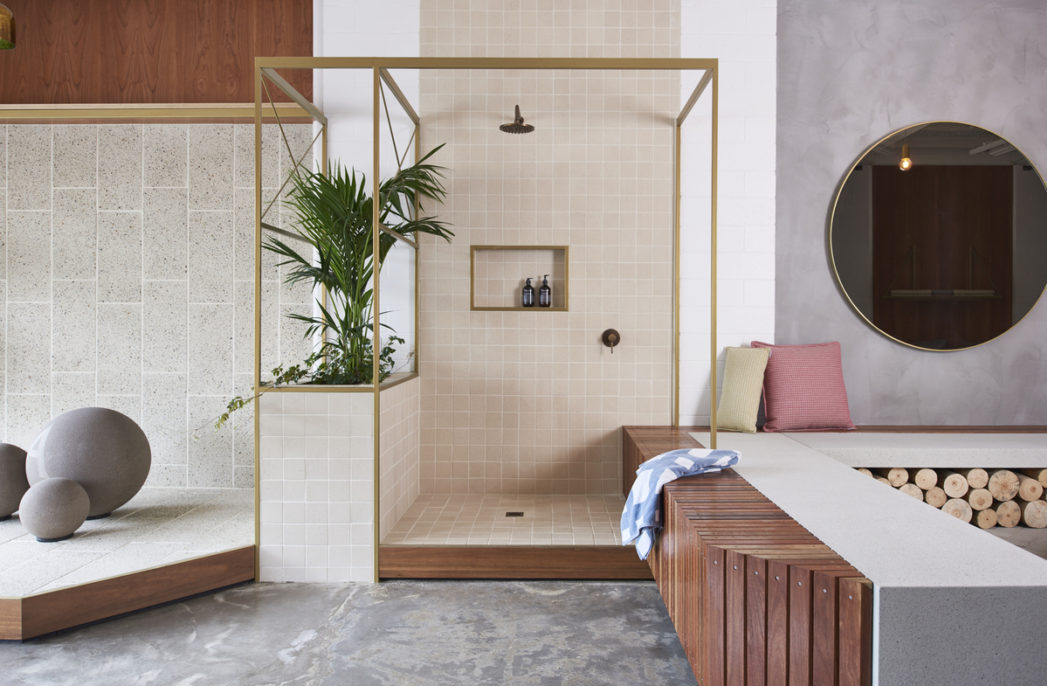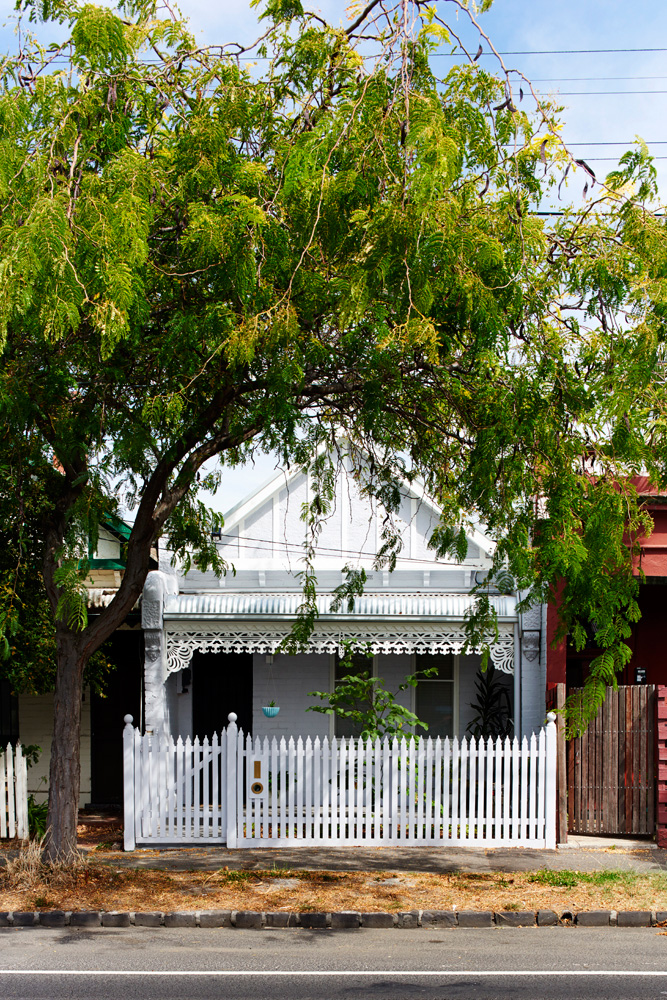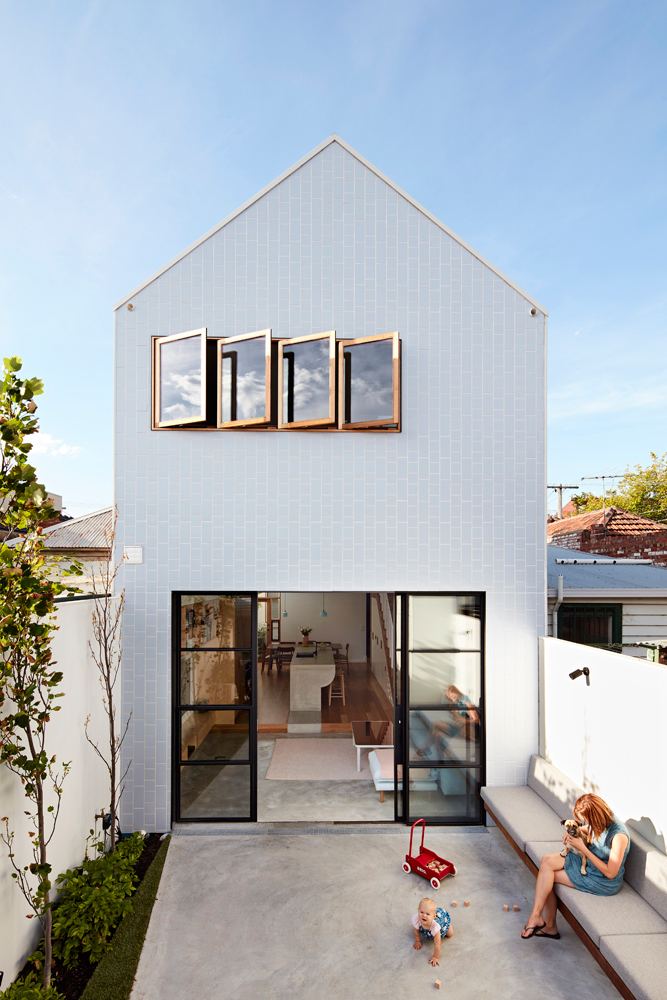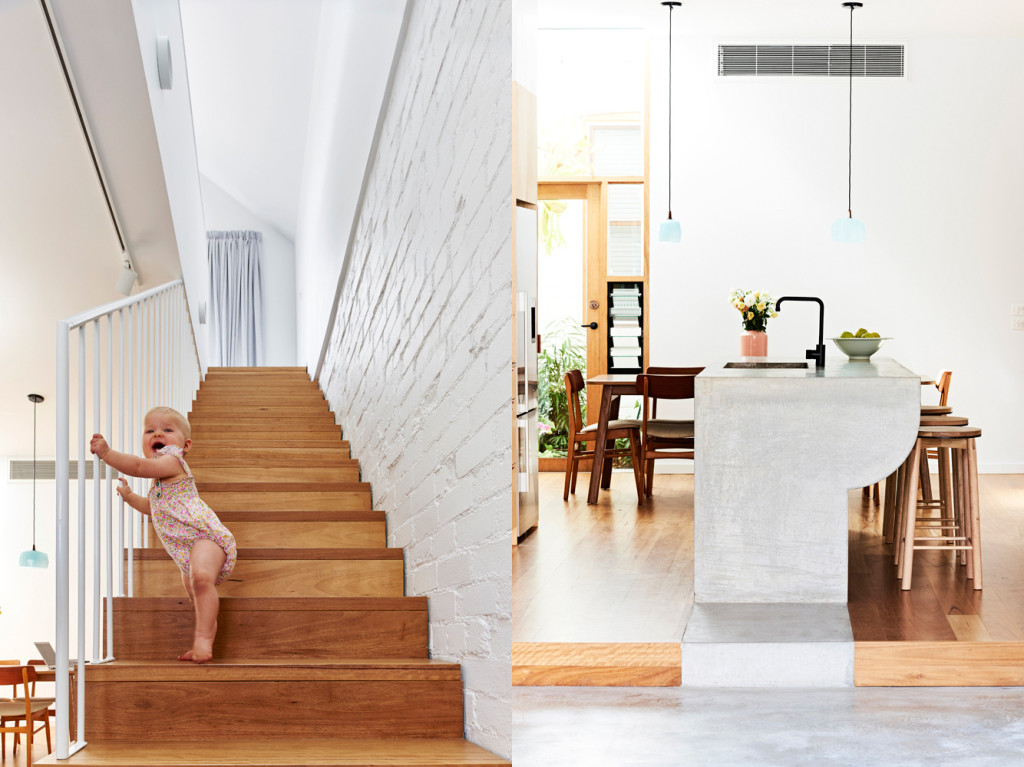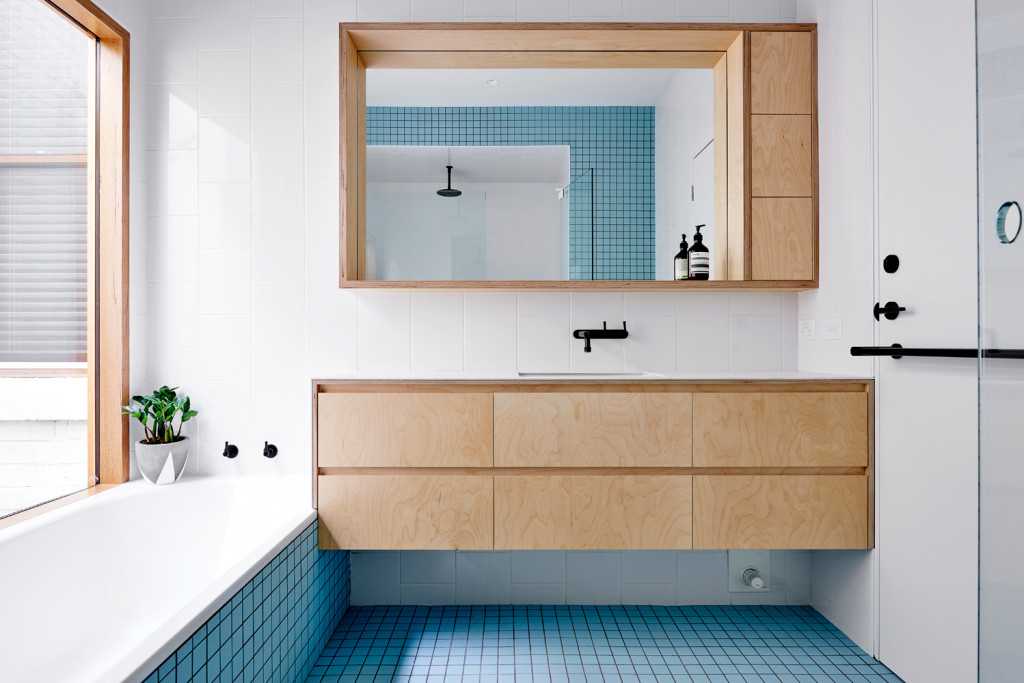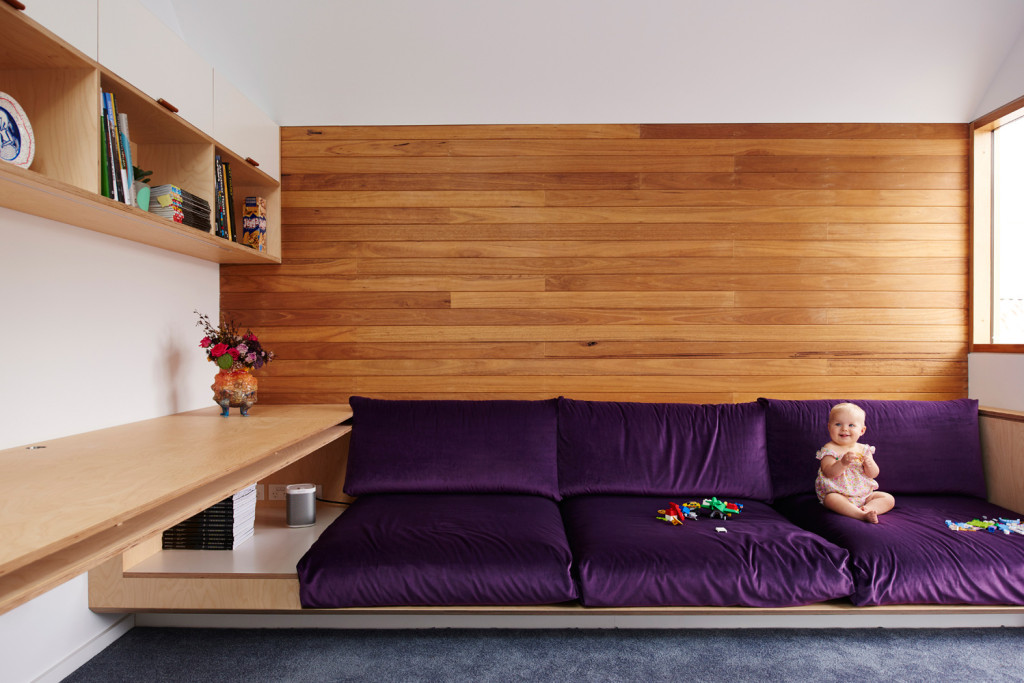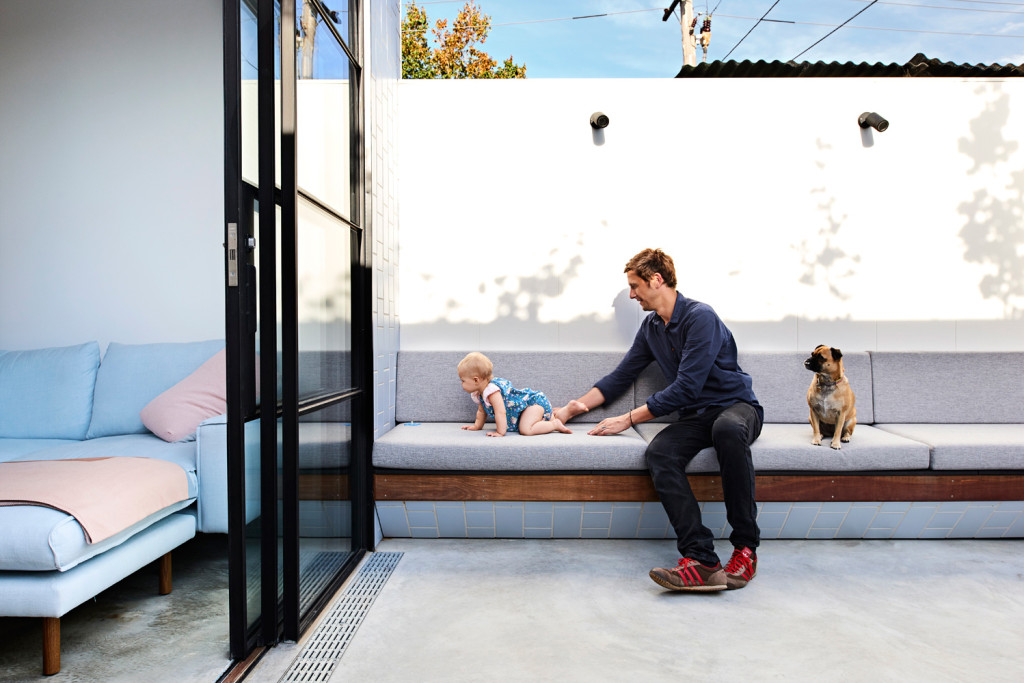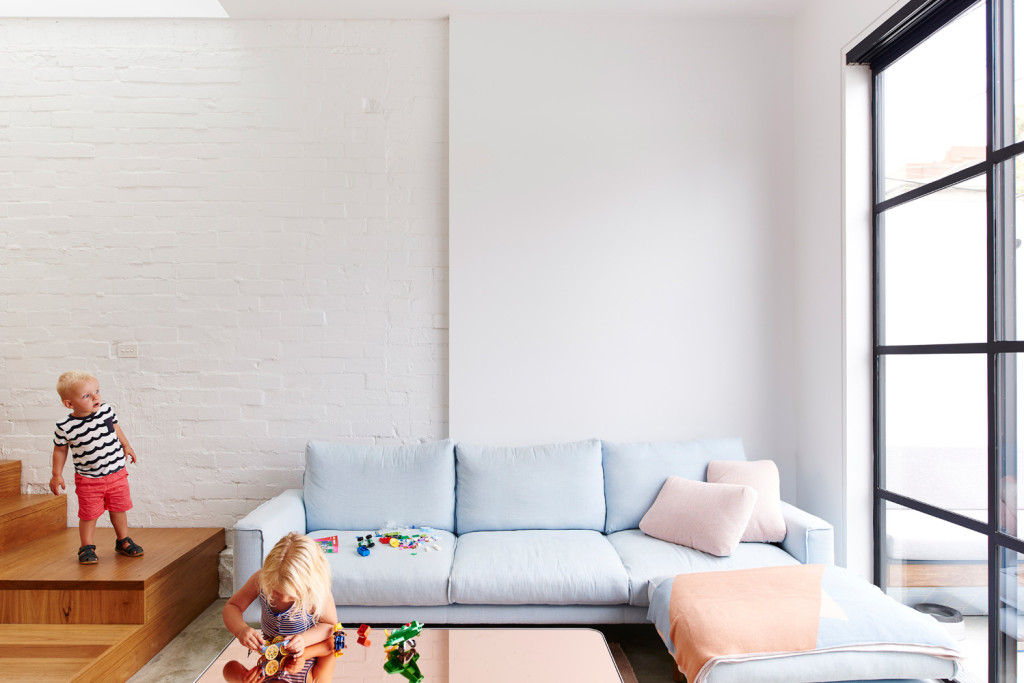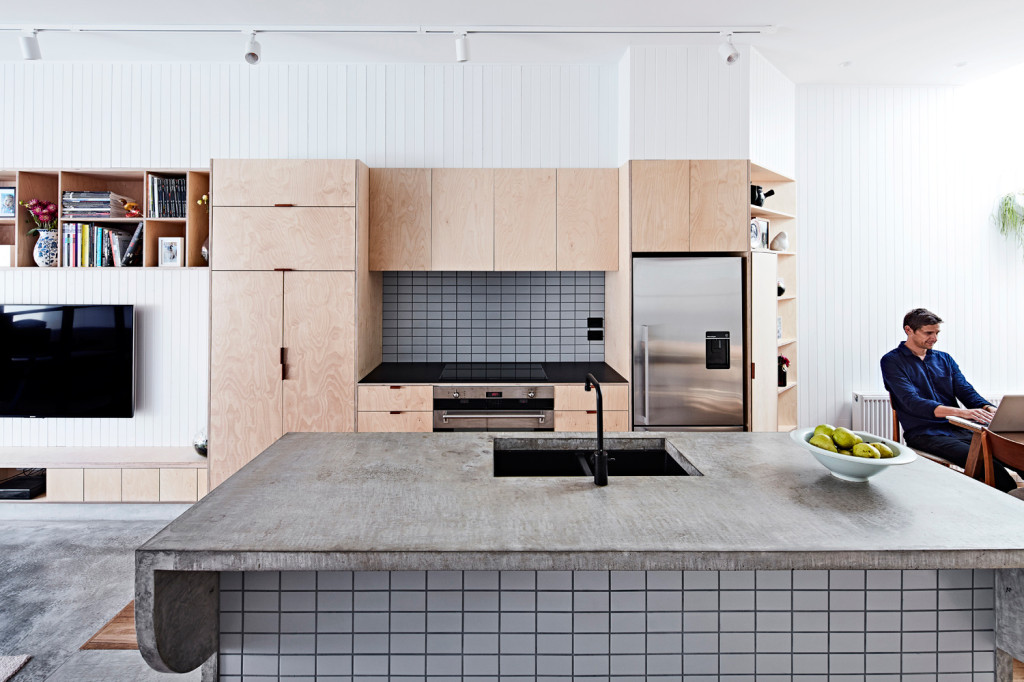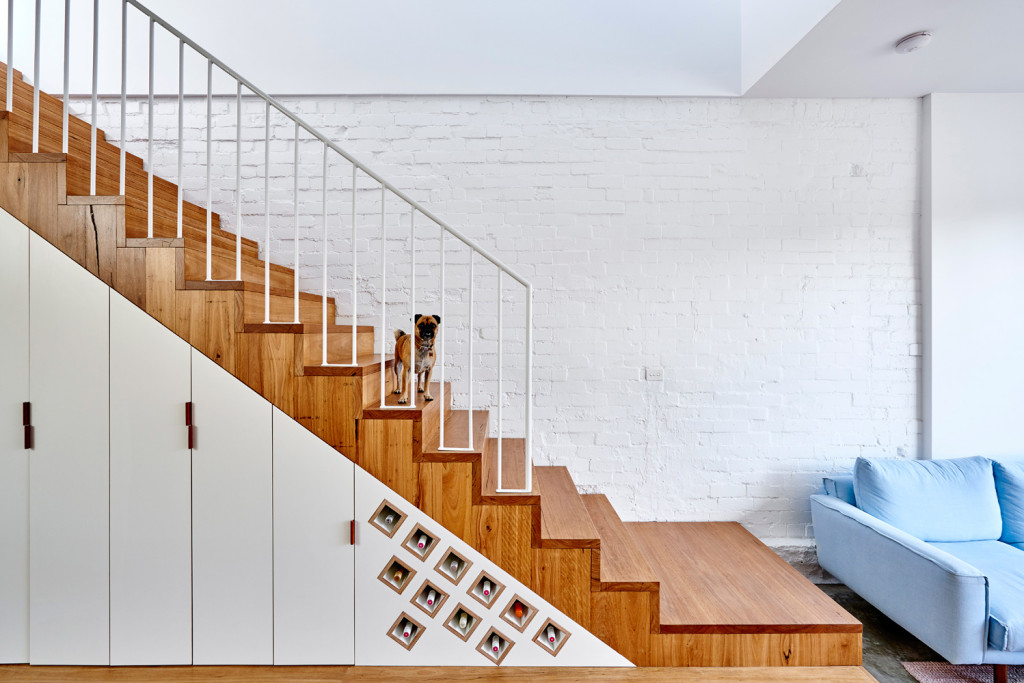
High House
High House
Share
Design – Dan Gayfer Design
Text – Susan Muldowney
Photography – Dean Bradley
Location – North Fitzroy, Australia
This article originally appeared in inside 92 – available now on newsstands, or digitally through Zinio.
High House by Dan Gayfer Design is a home with two faces. While the classic Victorian façade is of little surprise in a terrace-lined street of Melbourne’s North Fitzroy, the soaring gabled extension, accessed via a cobbled laneway at the rear, is anything but expected.
Gayfer’s clients set high demands for the renovation from the start. The house is located on a narrow plot just five metres wide, so the only way was up. They engaged Gayfer to design a highly flexible, highly functional space that aided social interaction and made the most of every centimetre. They wanted a second storey that felt like a natural extension of the first, rather than an extra room tacked on the top. They wanted plenty of storage that integrated with the overall design of the home. They also wanted an abundance of natural light – a seemingly tough call for a south-facing footprint.
Gayfer’s response was to turn the classic terrace house on its head. Only the two bedrooms at the front of the house have been retained. The rest, as Gayfer puts it, was ‘dusted’. He has created a wonderful sense of space through a pitched-roof extension and the home is the now perfect reflection of how this young couple and their one year- old like to live – without complication or effort, surrounded by good company.
Gayfer believes south-facing houses are too easily underestimated. “A lot of people write them off ,” he says. “You just need to be very considerate about how to get the light in.” Gayfer took on the challenge of the southern orientation through simple elements like skylights and more thoughtful additions, such as a glasslined central courtyard that welcomes the sun and divides the home’s original structure from the new addition.
The rear of the house is clad with distinctive pale blue tiles. What could have been a dull, flat rear exterior is broken up by their intricate grid and the addition of four casement windows, which project from the tiled surface when opened. Gayfer explains that the lack of mullions between the windows reduces any sense of weight. “I wanted to take out any bulk from the back exterior,” he explains. “The front of the house is quite ornate. The back feels completely different.”
Custom steel and glass sliding doors at the rear lead into the living area, which has a concrete floor in beautiful contrast to the warm Russian birch joinery that lines the wall. “It’s harder than typical treated ply and it’s the blondest there is, so it doesn’t appear heavy on the walls,” says Gayfer. What is perhaps most impressive about Gayfer’s design is the effortless sense of continuity from one space to the next. A line of concrete extends from the floor of the living area to the kitchen’s bold, Brutalist island bench and Gayfer has softened its form through the addition of gentle curves.
The blackbutt timber floors in the kitchen and dining area extend to the staircase, which also features a custom fabricated steel balustrade that subtly references the sliding doors at the rear of the house. Gayfer’s focus on light continues upstairs with the addition of louvred windows in the lounge area, which are also a feature of the bathroom downstairs. “I wanted this space to feel like a sunroom,” he explains. “The louvres bring a bit of a Queensland feel into the room.”
A small terrace extends from the lounge and provides a sunny view of the surrounding rooftops. To meet the social requirements of his client, Gayfer has designed the terrace with built-in seating and a bar fridge concealed behind pale pink tiles that line the space. “I always think about creating opportunities for social connections through design,” says Gayfer. The lounge area doubles as an office with a built-in desk and shelving that references the designs downstairs. “Continuity of details brings the space together and connects the upstairs and downstairs,” says Gayfer. “Too often, there’s a sense of disconnection with first-floor renovations.”
The master bedroom, located just beyond the lounge room, features the casement windows that create that extra dimension to the home’s exterior rear wall. A sense of continuity and connection is also created in the en suite, which is lined with pale pink tiles that match those of the terrace. Back downstairs, Gayfer has addressed the need for functionality with storage built into the staircase. Space has also been saved through the addition of a pivot door that leads to the entrance hall. “By eliminating the need for architraves, you can create a sense of extra space,” he explains.
Gayfer’s design of High House thoughtfully overcomes the challenges that this narrow, south-facing site presents. No element has been overlooked and the clients have a bright and flexible home with the social aspects they required. It is testament to an architect at the height of his game.
You Might also Like
